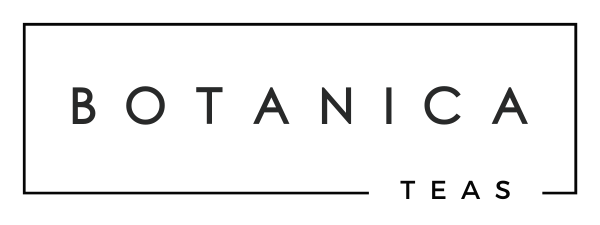
HERBAL DICTIONARY
There are thousands of herbs and plants from different regions of the world, each with its own unique benefits and uses. It’s impossible to know every herb, so when learning about herbalism, focus on individual herbs and building a personal relationship with each.
Herbs can affect us differently—what works for one person may not work for another. By taking the time to understand the properties and uses of specific herbs, you’ll develop a deeper connection to their healing potential and a greater confidence in their use. Start small, stay curious, and let the plants guide your journey.
-
Astragalus
Immune system support, adaptogenic properties, may enhance energy and stamina.
-
Astragalus membranaceus
Parts used: roots
-
Burdock
Detoxifies the liver, supports skin & gut health, nourishing.
-
Arctium lappa
Parts used: roots
-
Chamomile
Calms the nervous system, supports digestion, promotes restful sleep.
-
Matricaria chamomilla
Parts used: flowers
-
Dandelion
Supports digestion and liver health, promotes detoxification, mild diuretic.
-
Taraxacum officinale
Parts used: roots, leaves, flowers
-
Echinacea
Boosts the immune system, may reduce the duration of colds and infections.
-
Echinacea purpurea / Echinacea angustifolia
Parts used: roots, leaves, flowers
-
Eleuthero
Adaptogen that combats stress, boosts energy, supports endurance, supports immune system. Also called siberian ginseng.
-
Eleutherococcus senticosus
Parts used: roots
-
Ginger
Eases nausea, aids digestion, anti-inflammatory, supports circulation.
-
Zingiber officinale
Parts used: rhizome/roots
-
Gotu Kola
Supports cognitive function, enhances skin healing, reduces anxiety.
-
Centella asiatica
Parts used: leaves, aerial parts
-
Holy Basil
Reduces stress, supports respiratory health, balances blood sugar levels.
-
Ocimum sanctum / Ocimum tenuiflorum
Parts used: leaves, flowers
-
Lemon Balm
Calms the nervous system, supports digestion, may ease mild anxiety and insomnia.
-
Melissa officinalis
Parts used: leaves
-
Nettle
Rich in vitamins and minerals, supports kidney health, may reduce inflammation.
-
Urtica dioica
Parts used: leaves, roots
-
Turmeric
Potent anti-inflammatory, supports joint health, promotes liver function.
-
Curcuma longa
Parts used: rhizome/roots
Collapsible content
References
- Winston, D., & Maimes, S. (2007). Adaptogens: Herbs for Strength, Stamina, and Stress Relief. Healing Arts Press.
- NIH National Center for Complementary and Integrative Health (NCCIH): Astragalus Profile.
- Bone, K., & Mills, S. (2013). Principles and Practice of Phytotherapy. Elsevier.
- Kloos, H. (2020). Medicinal Plants of the World. CRC Press.
- Brinker, F. (2010). Herbal Contraindications and Drug Interactions Plus Herbal Adjuncts with Medicines. Eclectic Medical Publications.
- Grieve, M. (1931). A Modern Herbal.
- McKay, D. L., & Blumberg, J. B. (2006). A Review of the Bioactivity and Potential Health Benefits of Chamomile Tea (Phytotherapy Research).
- Percival, S. S. (2000). Use of Echinacea in Medicine (Biochemical Pharmacology).
- Foster, S., & Duke, J. A. (2000). A Field Guide to Medicinal Plants and Herbs of Eastern and Central North America.
- Panossian, A., & Wagner, H. (2005). Adaptogens: Tonic Herbs for Fatigue and Stress (Phytomedicine).
- Zadeh, J. B., & Kor, N. M. (2014). Physiological and Pharmaceutical Effects of Ginger (IOSR Journal of Pharmacy and Biological Sciences).
- James, J. T., & Dubery, I. A. (2009). Pentacyclic Triterpenoids from the Medicinal Herb Centella asiatica (Molecules).
- Winston, D., & Kuhn, M. A. (2008). Herbal Therapy and Supplements.
- Cohen, M. M. (2014). Tulsi - Ocimum sanctum: A Herb for All Reasons (Journal of Ayurveda and Integrative Medicine).
- Puri, H. S. (2002). Rasayana: Ayurvedic Herbs for Longevity and Rejuvenation. CRC Press.
- Kennedy, D. O., & Scholey, A. B. (2006). The Psychopharmacology of European Herbs (Current Pharmaceutical Design).
- Yarnell, E., & Abascal, K. (2009). Botanical Medicines for the Urinary Tract (World Journal of Urology).
- Hoffmann, D. (2003). Medical Herbalism: The Science and Practice of Herbal Medicine. Healing Arts Press.
- Aggarwal, B. B., & Harikumar, K. B. (2009). Potential Therapeutic Effects of Curcumin (The International Journal of Biochemistry & Cell Biology).
- Jurenka, J. S. (2009). Anti-inflammatory Properties of Curcumin, a Major Constituent of Curcuma longa: A Review (Alternative Medicine Review).
-

HERBAL DICTIONARY
LEARN MORE -

HERBAL TERMS
LEARN MORE -

HERBAL PREPARATIONS
LEARN MORE



